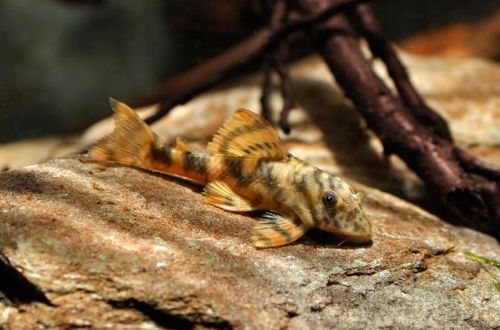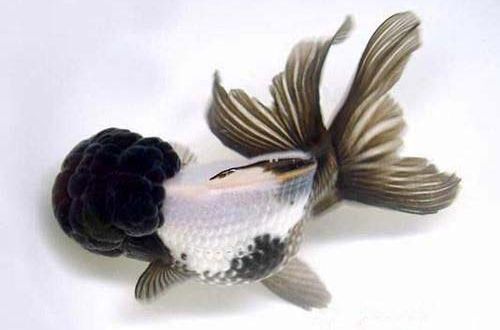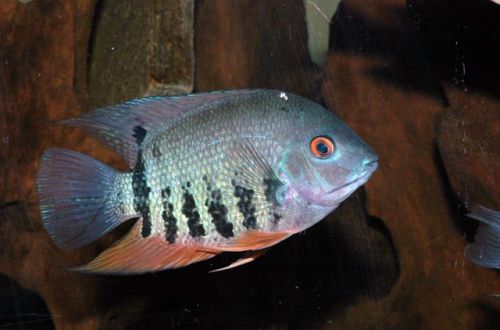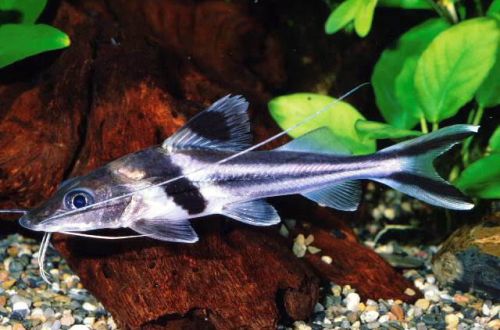
Plecostomus Pekkolt
Plecostomus Peckolt, scientific classification Peckoltia sp. L288, belongs to the family Loricariidae (Mail catfish). Catfish is named after the German botanist and pharmacist Gustav Peckkolt, who published one of the first books about the flora and fauna of the Amazon in the late 19th century. The fish does not have an exact classification, therefore, in the scientific part of the name there is an alphabetic and numerical designation. Rarely seen in the hobby aquarium.

Contents
Habitat
Comes from South America. Currently, catfish is known only in the small river Curua Uruara (Para do Uruara) in the state of Para, Brazil. It is a tributary of the Amazon, flowing into the main channel of the river in the lower reaches.
Brief information:
- The volume of the aquarium – from 80 liters.
- Temperature – 26-30°C
- Value pH — 5.0–7.0
- Water hardness – 1–10 dGH
- Substrate type – any
- Lighting – subdued
- Brackish water – no
- Water movement – light or moderate
- The size of the fish is 9–10 cm.
- Nutrition – plant-based sinking foods
- Temperament – peaceful
- Content alone or in a group
Description
Adults reach a length of 9–10 cm. The fish has a triangular head profile, large fins and a forked tail. The body is covered with modified scales resembling plates with a rough surface. The first rays of the fins are noticeably thickened and look like sharp spikes. The color is yellow with black stripes. Sexual dimorphism is weakly expressed. Sexually mature females look somewhat stocky (wider) when viewed from above.
Food
In nature, it feeds on plant foods – algae and soft parts of plants. The diet also includes small invertebrates and other zooplankton that inhabit the kelp beds. In a home aquarium, the diet should be appropriate. It is recommended to use specialized feed for herbivorous catfish containing all the necessary components.
Maintenance and care, arrangement of the aquarium
The optimal size of an aquarium for one or two fish starts at 80 liters. The design is arbitrary, provided that there are several places for shelters formed from snags, thickets of plants or decorative objects (artificial grottoes, gorges, caves).
Successful keeping of Plecostomus Peckcolt depends on a number of factors. In addition to a balanced diet and suitable neighbors, maintaining stable water conditions within an acceptable temperature and hydrochemical range is essential. To do this, the aquarium is equipped with a productive filtration system and other necessary equipment, as well as regular cleaning procedures, replacing part of the water with fresh water, removing organic waste, etc.
Behavior and Compatibility
Peaceful calm catfish, which, thanks to its “armor”, is able to get along with rather restless species. However, it is advisable to select fish that are not overly aggressive and of comparable size in the water column or near the surface to avoid competition for bottom territory.
Breeding / breeding
At the time of writing, not enough information could be found on breeding this species in captivity, which is probably due to low popularity in the amateur aquarium hobby. The breeding strategy should be largely similar to other related species. With the onset of the mating season, the male occupies a site, the center of which is some kind of shelter or underwater cave / / hole. After a short courtship, the fish form a clutch. The male stays nearby to protect future offspring until the fry appear.
Fish diseases
The cause of most diseases is unsuitable conditions of detention. A stable habitat will be the key to successful keeping. In the event of symptoms of the disease, first of all, the quality of the water should be checked and, if deviations are found, measures should be taken to correct the situation. If symptoms persist or even worsen, medical treatment will be required. Read more about symptoms and treatments in the Aquarium Fish Diseases section.





